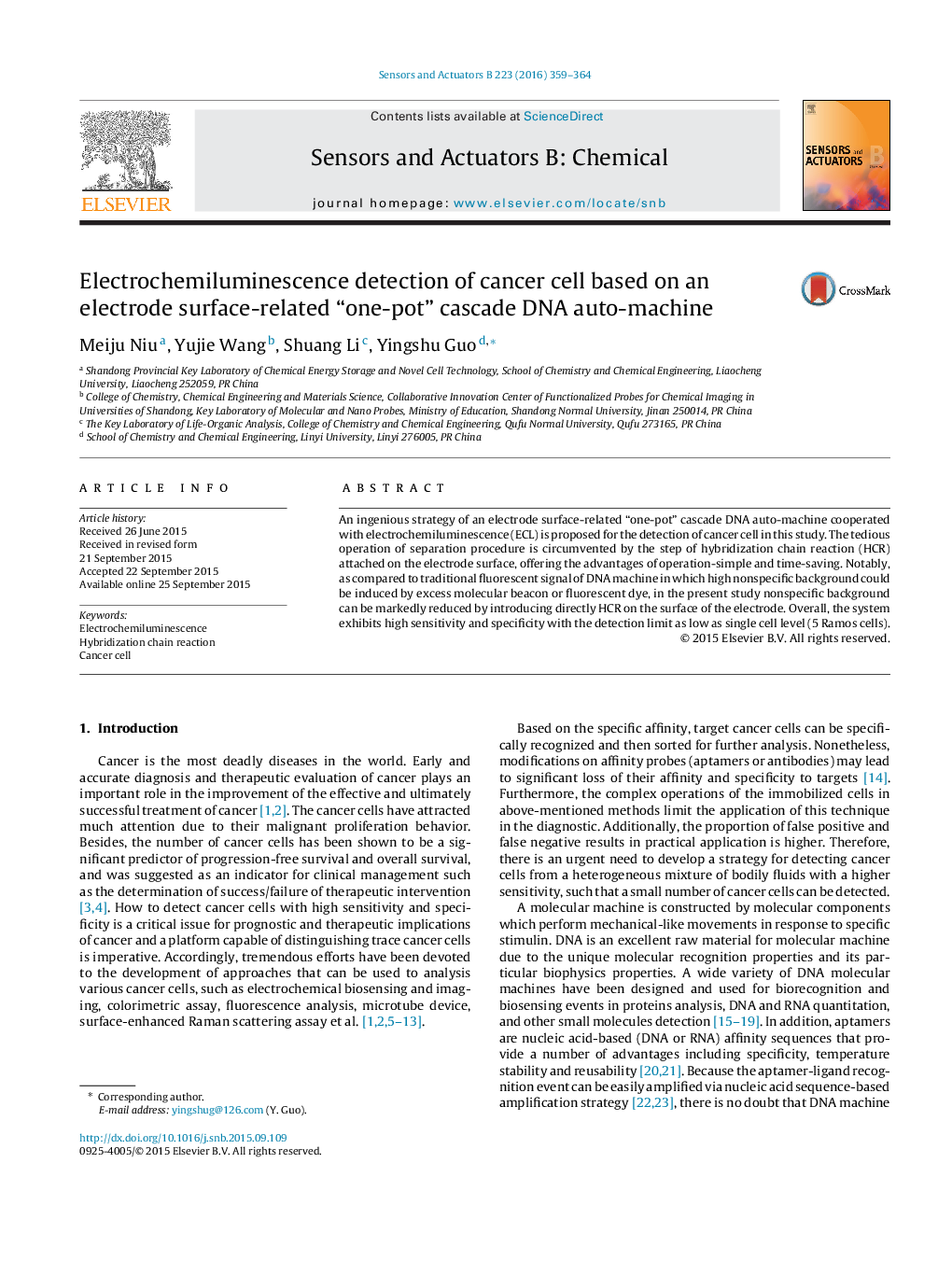| Article ID | Journal | Published Year | Pages | File Type |
|---|---|---|---|---|
| 7145258 | Sensors and Actuators B: Chemical | 2016 | 6 Pages |
Abstract
An ingenious strategy of an electrode surface-related “one-pot” cascade DNA auto-machine cooperated with electrochemiluminescence (ECL) is proposed for the detection of cancer cell in this study. The tedious operation of separation procedure is circumvented by the step of hybridization chain reaction (HCR) attached on the electrode surface, offering the advantages of operation-simple and time-saving. Notably, as compared to traditional fluorescent signal of DNA machine in which high nonspecific background could be induced by excess molecular beacon or fluorescent dye, in the present study nonspecific background can be markedly reduced by introducing directly HCR on the surface of the electrode. Overall, the system exhibits high sensitivity and specificity with the detection limit as low as single cell level (5 Ramos cells).
Related Topics
Physical Sciences and Engineering
Chemistry
Analytical Chemistry
Authors
Meiju Niu, Yujie Wang, Shuang Li, Yingshu Guo,
